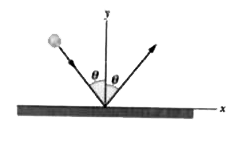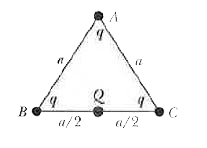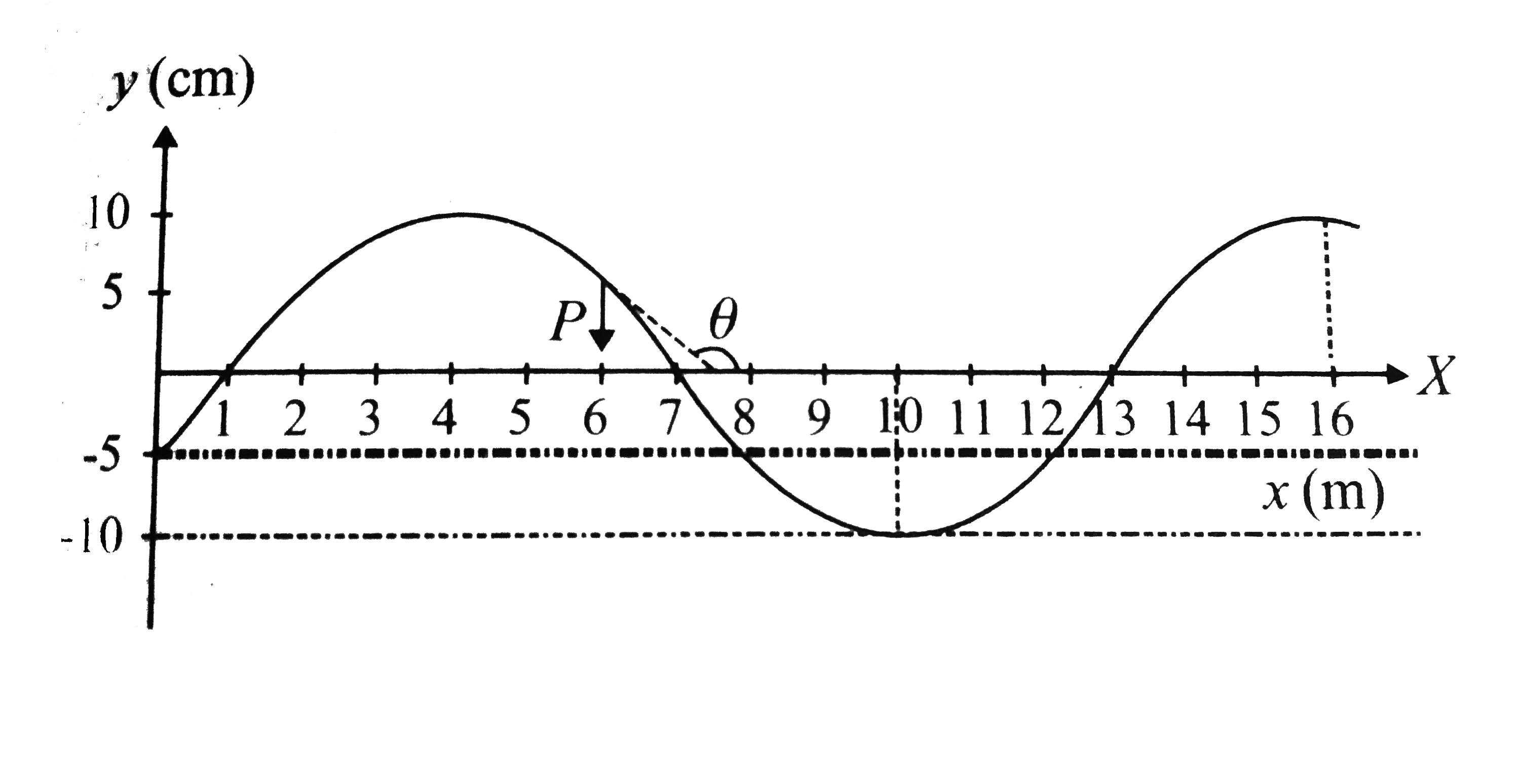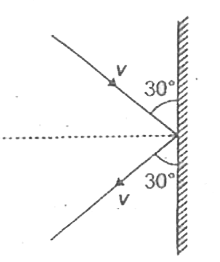The figure shows an overhead view of a ball bouncing from a vertical wall without any change in its speed. Consider the change Δ→p in the ball's linear momentum . (a) Is Δpx positive , negative , or zero ? (b) Is Δp , positive , negative , or zero ? (c ) What is the direction of Δ→p ?

The correct Answer is:(a)Zero ; (b) Positive (initial py down y and final py up y ) ; (c ) Positive direction of y.
Step by step video & image solution for The figure shows an overhead view of a ball bouncing from a vertical wall without any change in its speed. Consider the change Deltavecp in the ball's linear momentum . (a) Is Deltap_x positive , negative , or zero ? (b) Is Deltap , positive , negative , or zero ? (c ) What is the direction of Deltavecp ? by Physics experts to help you in doubts & scoring excellent marks in Class 12 exams.
Updated on:21/07/2023Topper's Solved these Questions
- CENTER OF MASS BOOK - RESNICK AND HALLIDAYCHAPTER - CENTER OF MASS EXERCISE - Problems
46 Videos
- CENTER OF MASS BOOK - RESNICK AND HALLIDAYCHAPTER - CENTER OF MASS EXERCISE - Practice Questions (Single Correct Choice )
47 Videos
- CAPACITANCEBOOK - RESNICK AND HALLIDAYCHAPTER - CAPACITANCEEXERCISE - PRACTICE QUESTION (INTEGER TYPE)
3 Videos
- CIRCUITSBOOK - RESNICK AND HALLIDAYCHAPTER - CIRCUITSEXERCISE - Practice Questions (Integer Type)
3 Videos
Similar Questions
A 0.70 kg ball moving horizontally at 6.0 m/s strikes a vertical wall and rebounds with speed 3.5 m/s. What is the magnitude of the change in its linear momentum?
View SolutionA very large swimming pool filled with water of temperture equal to 20∘C is heated by a resistor with a heating power of 500 W for 20 minutes. Assuming the water in the pool is not in any contact with anything besides the resistor, determine the following quanties.
Is the change of entropy of the resistor positive , negative or zero?
(i)ΔSrev>0 (ii)ΔSrev=0 (iii)ΔSrev<0
View Solution
Knowledge Check
The given figure shows an equilateral triangle ABC. A positive point charge |q is located at each of the three vertical A, B and C. each side of the triangle is of length a.
A point charge Q (that may be positive or negative) is placed at the mid-point between B and C.

Is it possible to choose the value of Q (that is non-zero) such that the force on Q is zero ? Explain why or why not.AYes, because the forces on Q are vector and three vectors can add to zeroBNo, because the forces on q are vectors and three vectors can never add to zeroCYes, because the electric force at the mid-point between B and C is zero whether a charge is placed there or not.DNo, because a fourth charge would be needed cancel the force on Q due to the charge at A.
A very large swimming pool filled with water of temperture equal to 20∘C is heated by a resistor with a heating power of 500 W for 20 minutes. Assuming the water in the pool is not in any contact with anything besides the resistor, determine the following quanties.
Is the change of entropy of the water positive, negative or zero?
(i)ΔSpool>0 (ii)ΔSpool=0 (iii)ΔSpool<0
View SolutionA very large swimming pool filled with water of temperture equal to 20∘C is heated by a resistor with a heating power of 500 W for 20 minutes. Assuming the water in the pool is not in any contact with anything besides the resistor, determine the following quanties.
Is the change of entropy of the system positive , negative or zero?
(i)ΔStotal>0 (ii)ΔStotal=0 (iii)ΔStotal<0
View SolutionThe absolute value of potential energy (and therefore total energy ) has no physical significance. It is the difference of potential energies that matters. One can, therefore, add or subtract a constant to the potential energy (provided we do it to potential energy at every position for a given force) without any change in the physical situation. By convention, for forces which fall off to zero at large distances, the potential energy at infinity is taken to be zero. With this choice, is the potential energy positive or negaive for (a) electron bound state, (b) planet-satellite system, (c) electron-electron system?
View Solutionshows the position of a medium particle at t=0, supporting a simple harmonic wave travelling either along or opposite to the positive x-axis.

(a) write down the equation of the curve. (b) find the angle θ made by the tangent at point P with the x-axis. (c ) If the particle at P has a velocity vpm/s, in the negative y-direction, as shown in figure, then determine the speed and direction of the wave. (d) find the frequency of the wave. (e) find the displacement equation of the particle at the origin as a function of time. (f) find the displacement equation of the wave.
View SolutionThe position vector →r of a particle points along the positive direction of a z axis. If the torque on the particle is (a) zero, (b) in the negative direction of x, and ( c) in the negative direction of y, in what direction is the force causing the torque?
View SolutionA ball of mass m strikes a rigid wall with speed v and gets reflected without any loss of speed, as shown in the figure.

(a) What is the magnitude of the impulse imparted to the ball by the wall?
(b) What is the direction of the force on the wall due to the ball?
View Solution(a) If the position of a particle is given by x=25t−6.0t3, where x is in meters and t is in seconds, when, if ever, is the particle's velocity v zero ? (b) When is its acceleration a zero ? For what time range ( positive or negative ) is a (c) negative and (d) positive ? (e) Graph x(t),v(t), and a(t).
View Solution